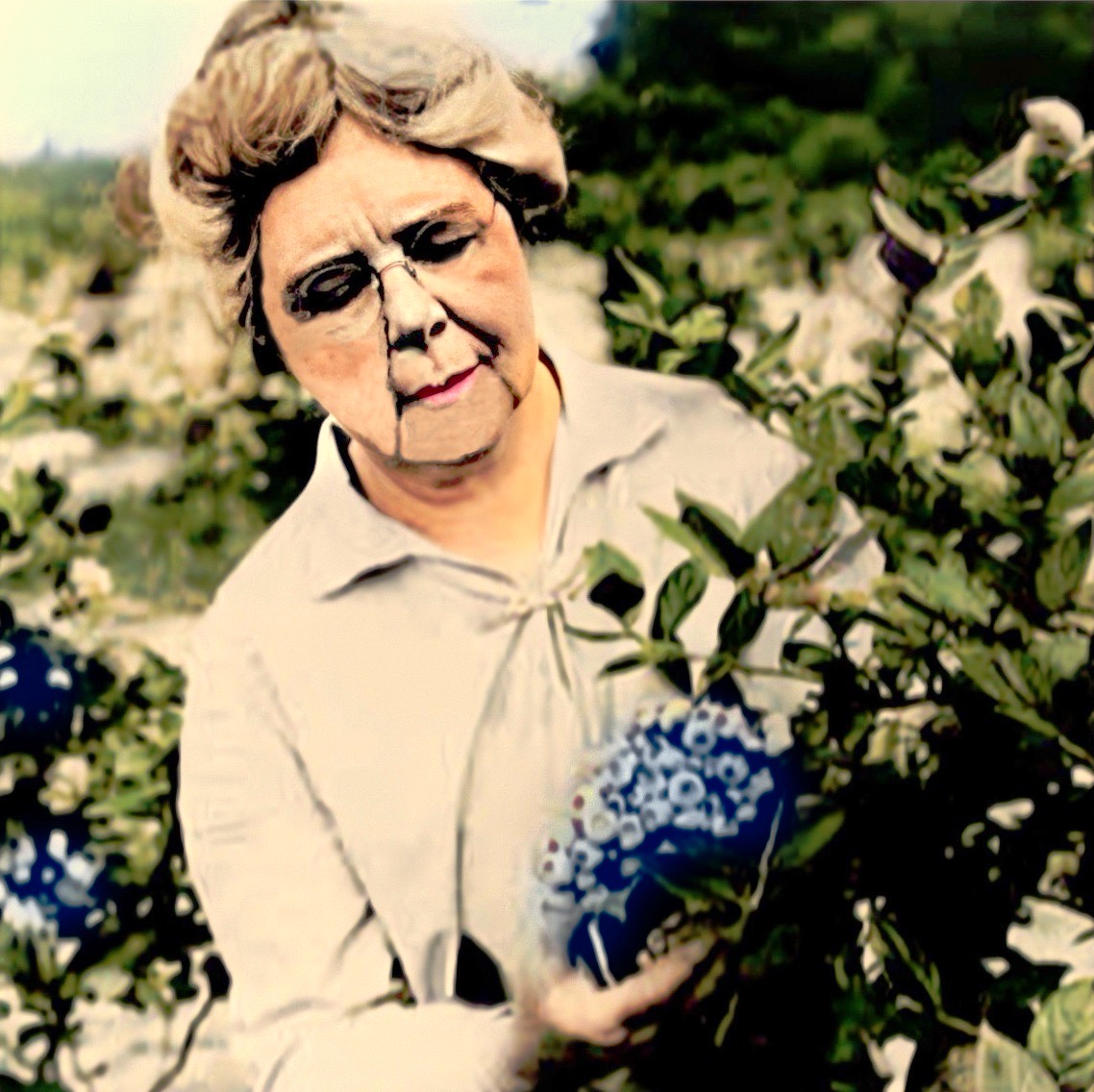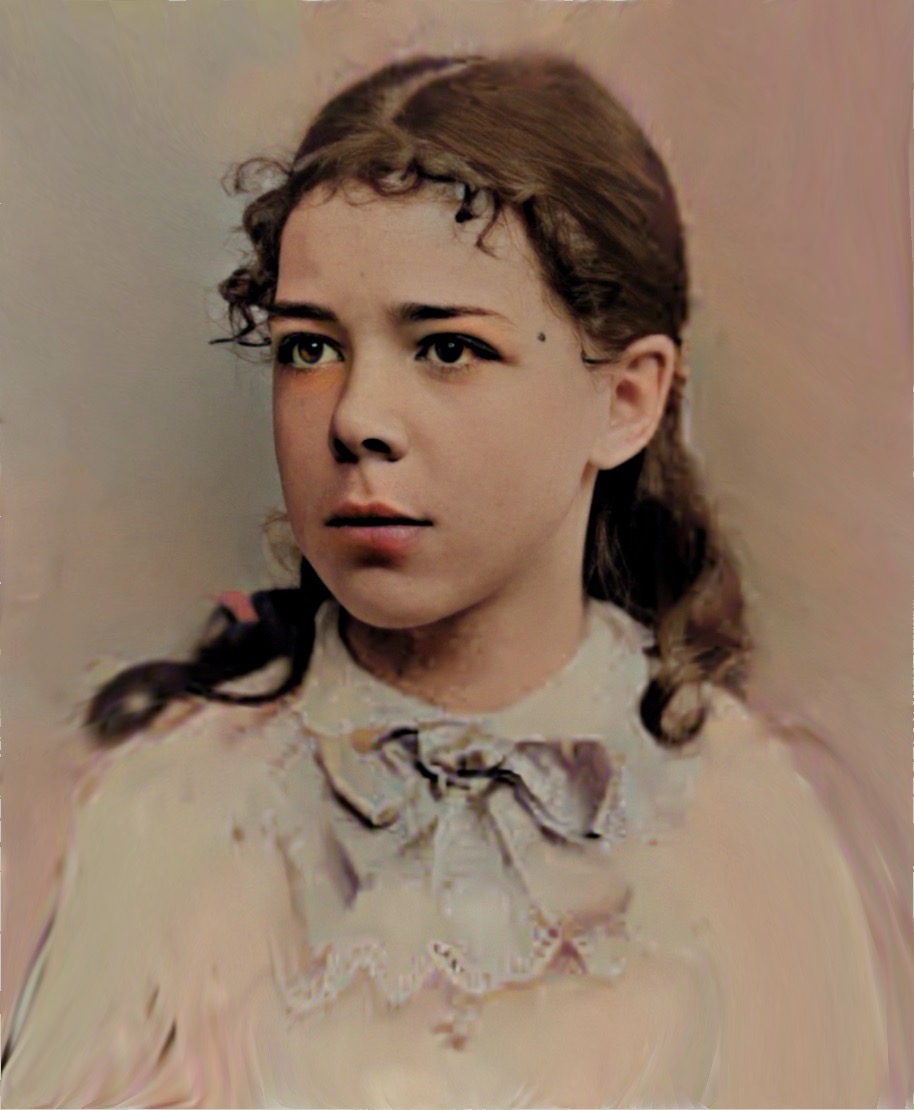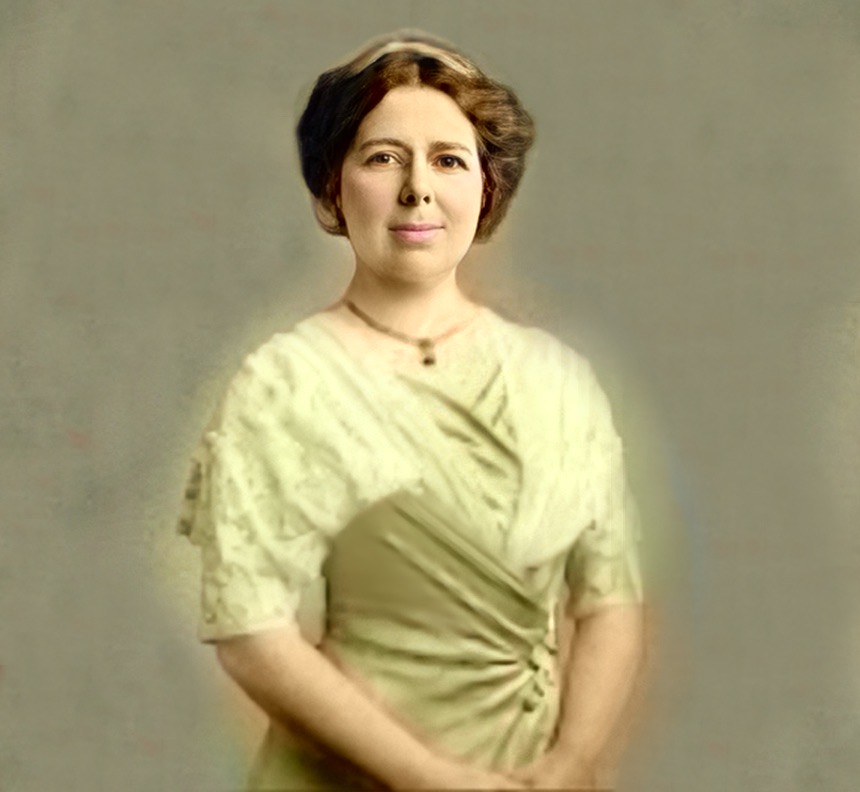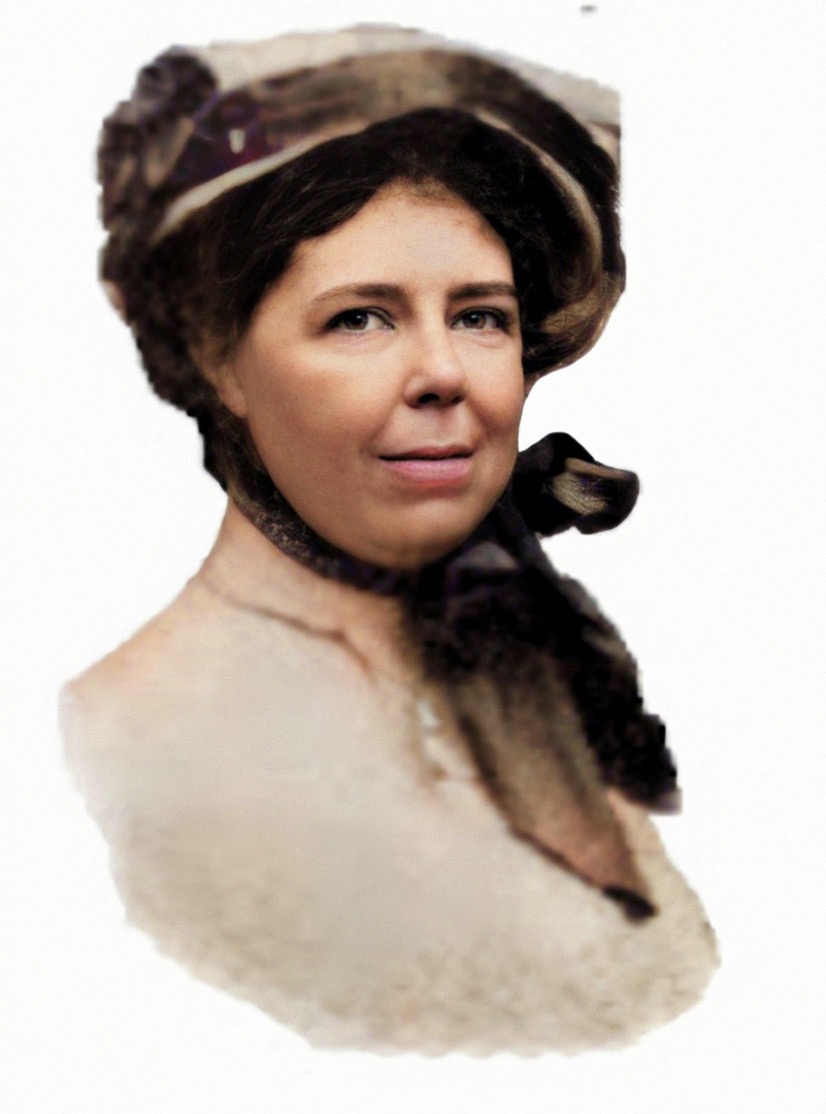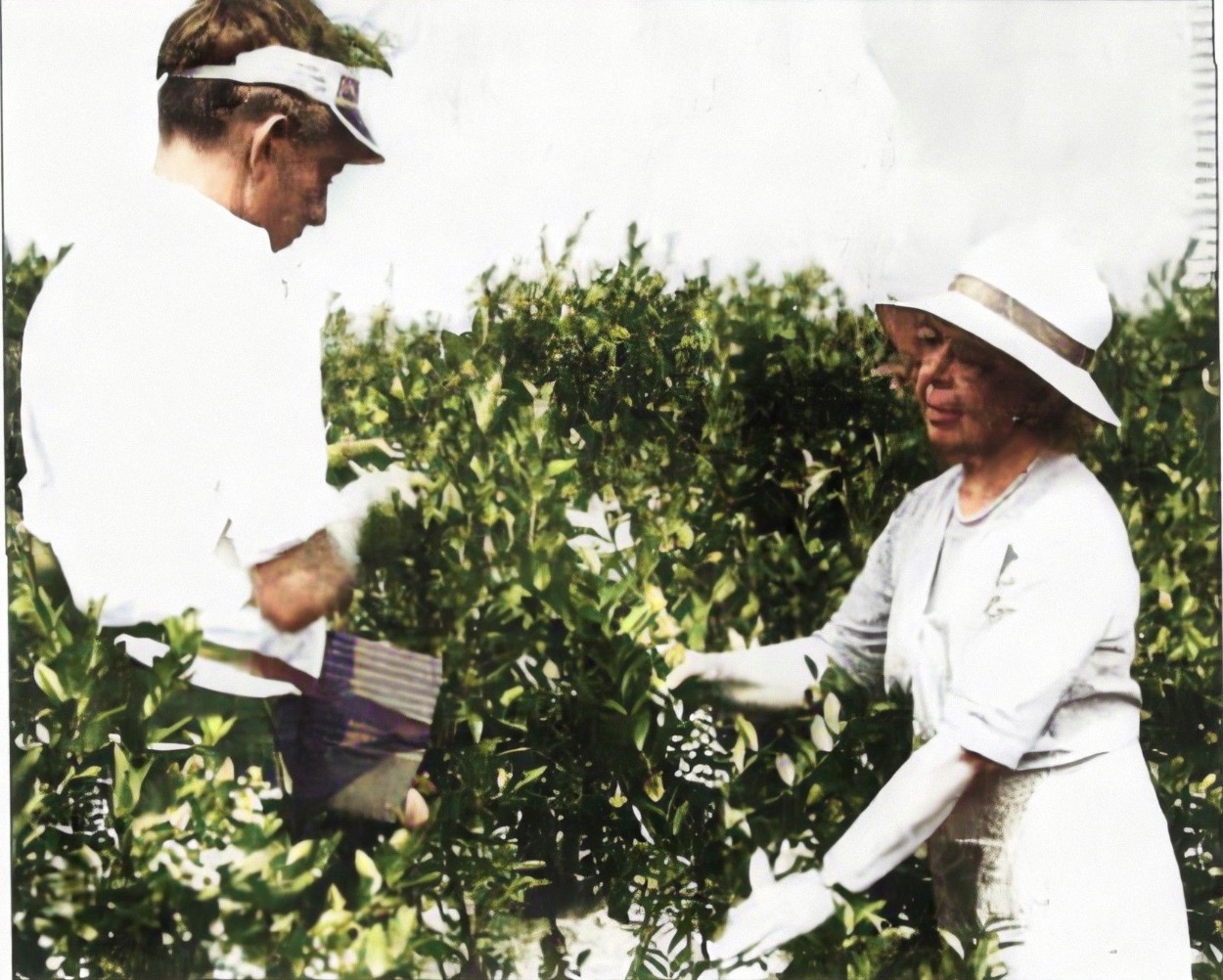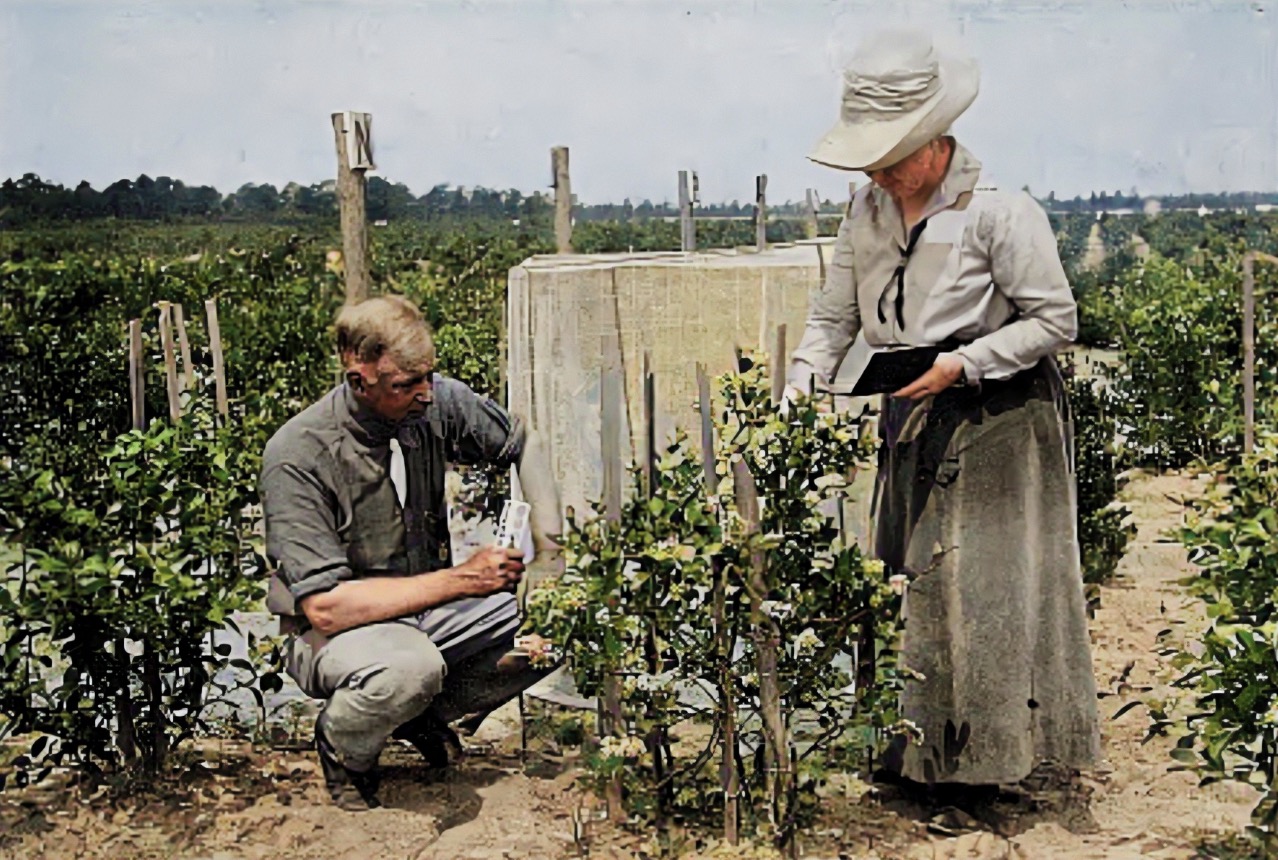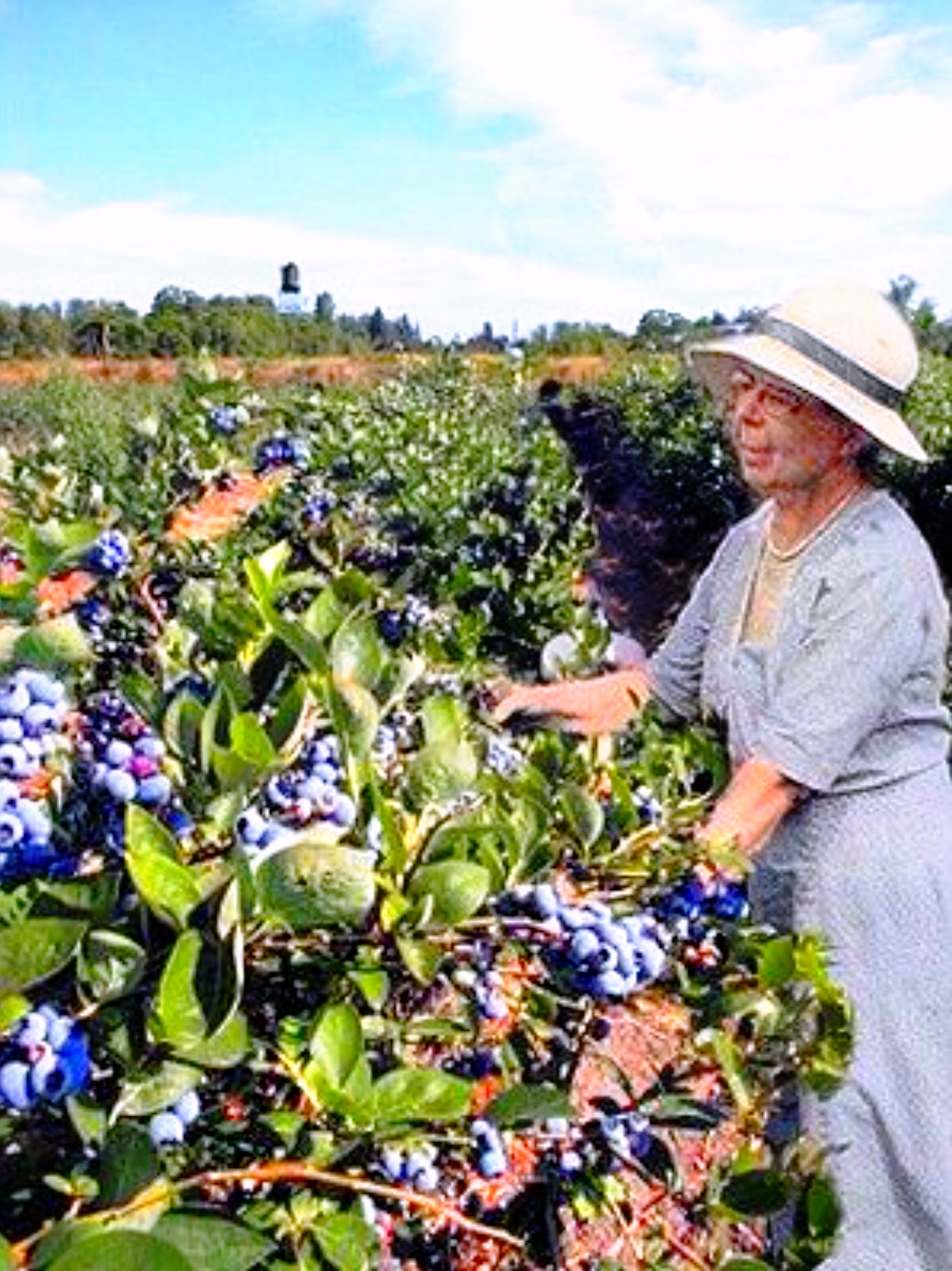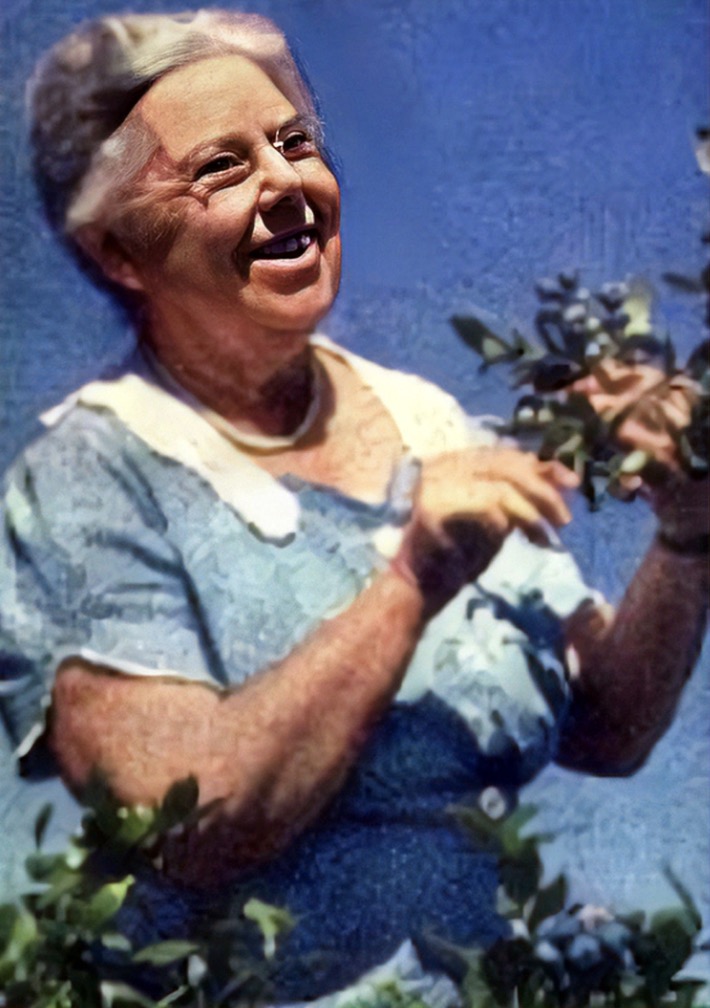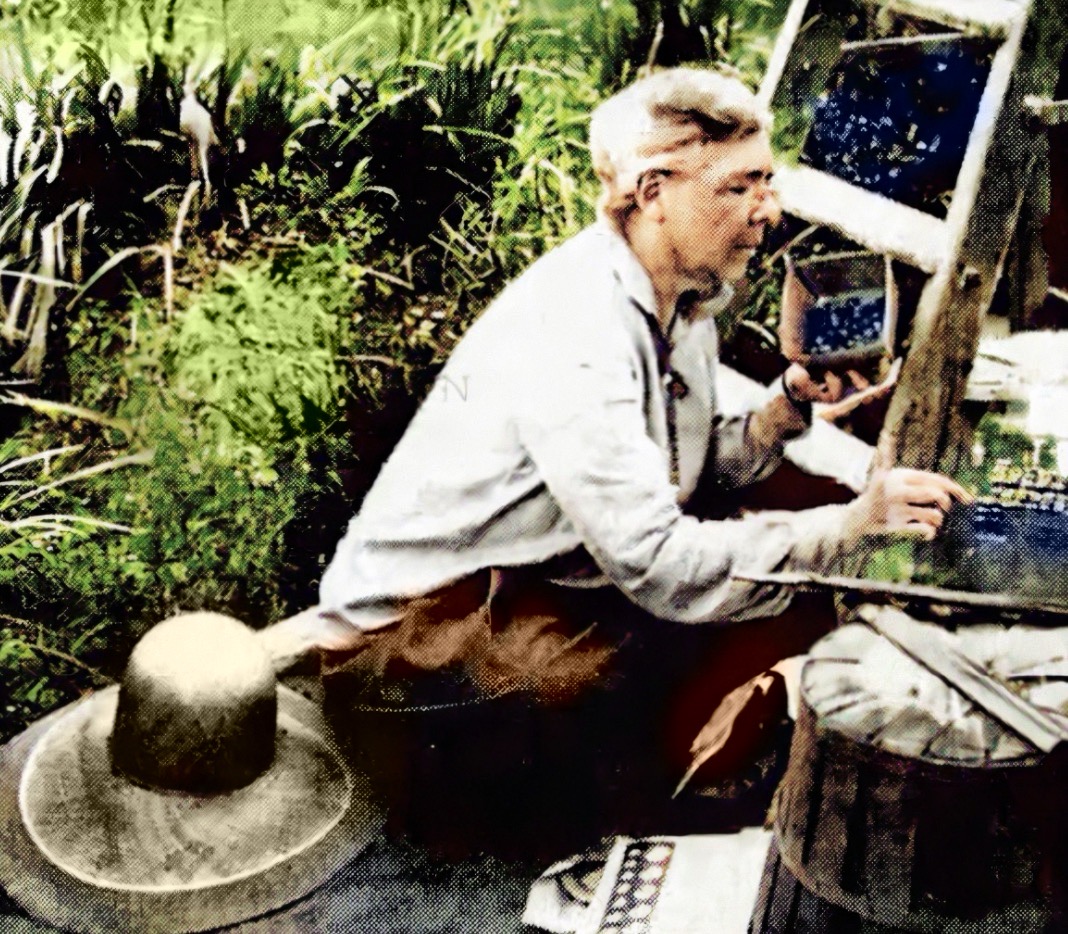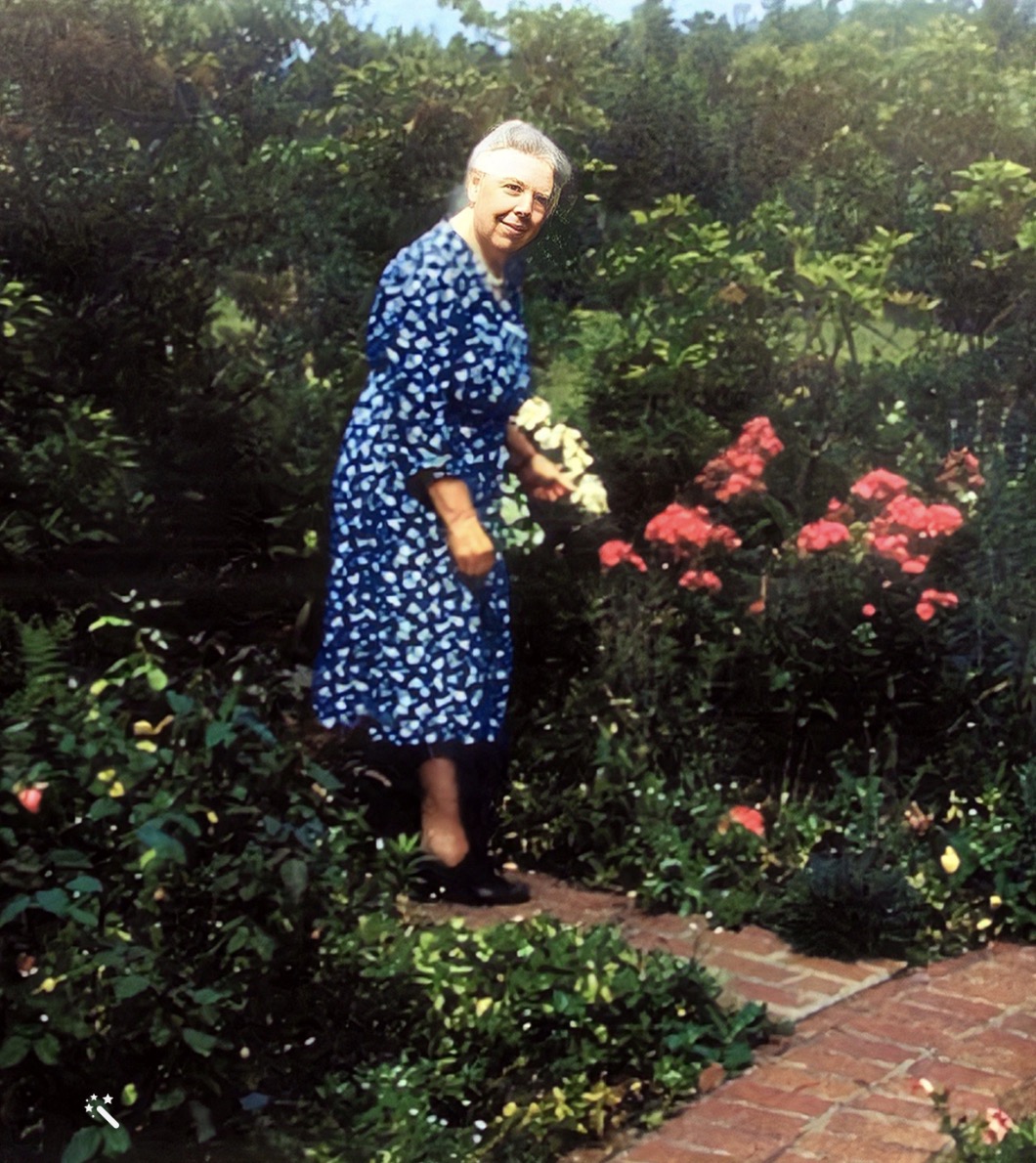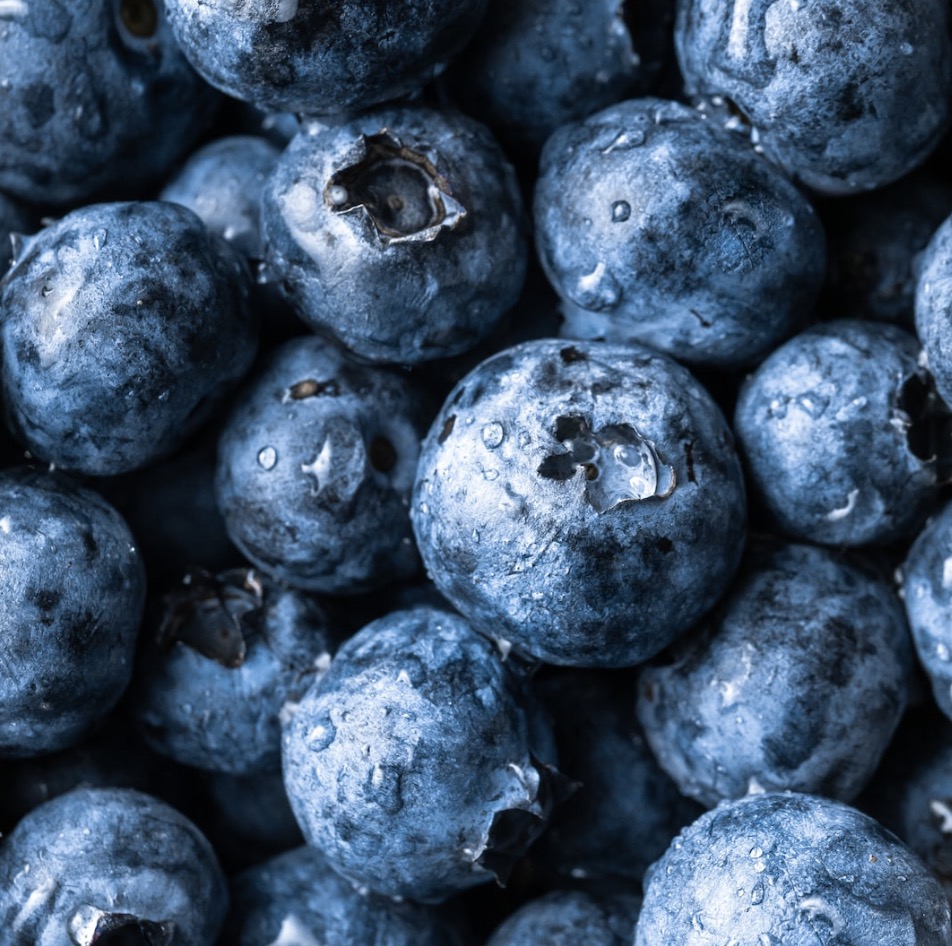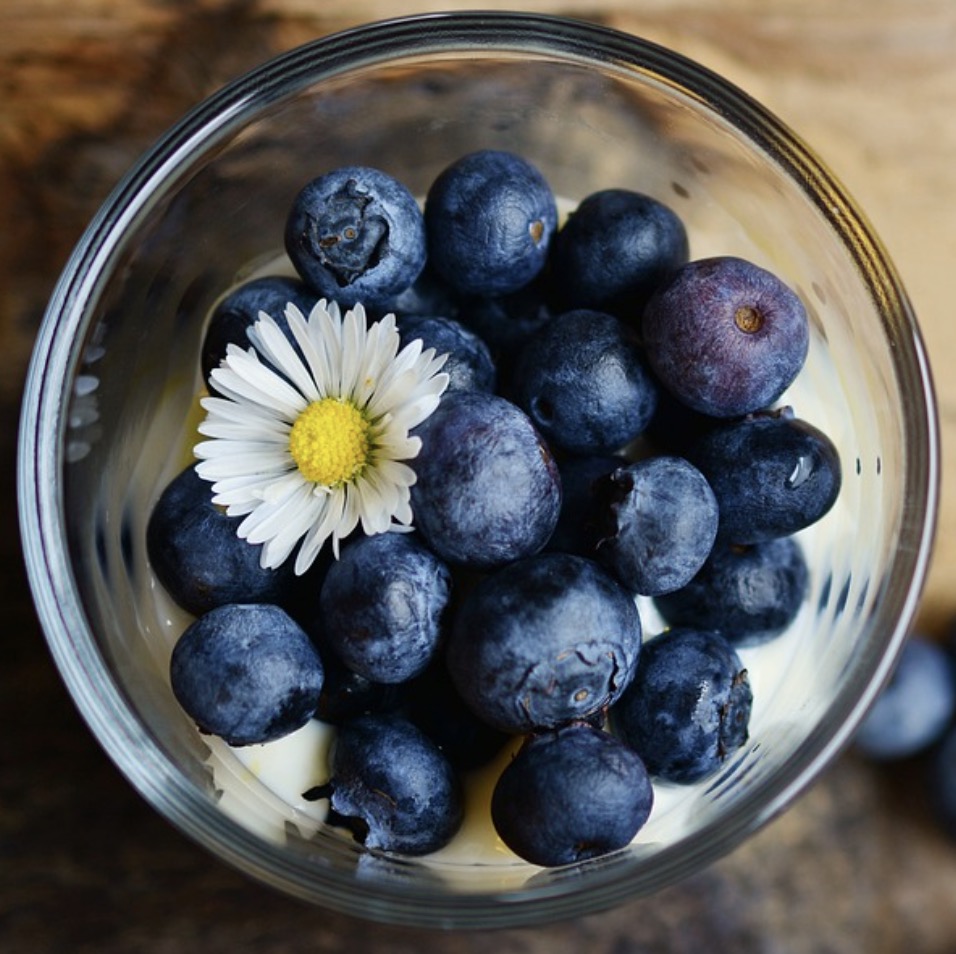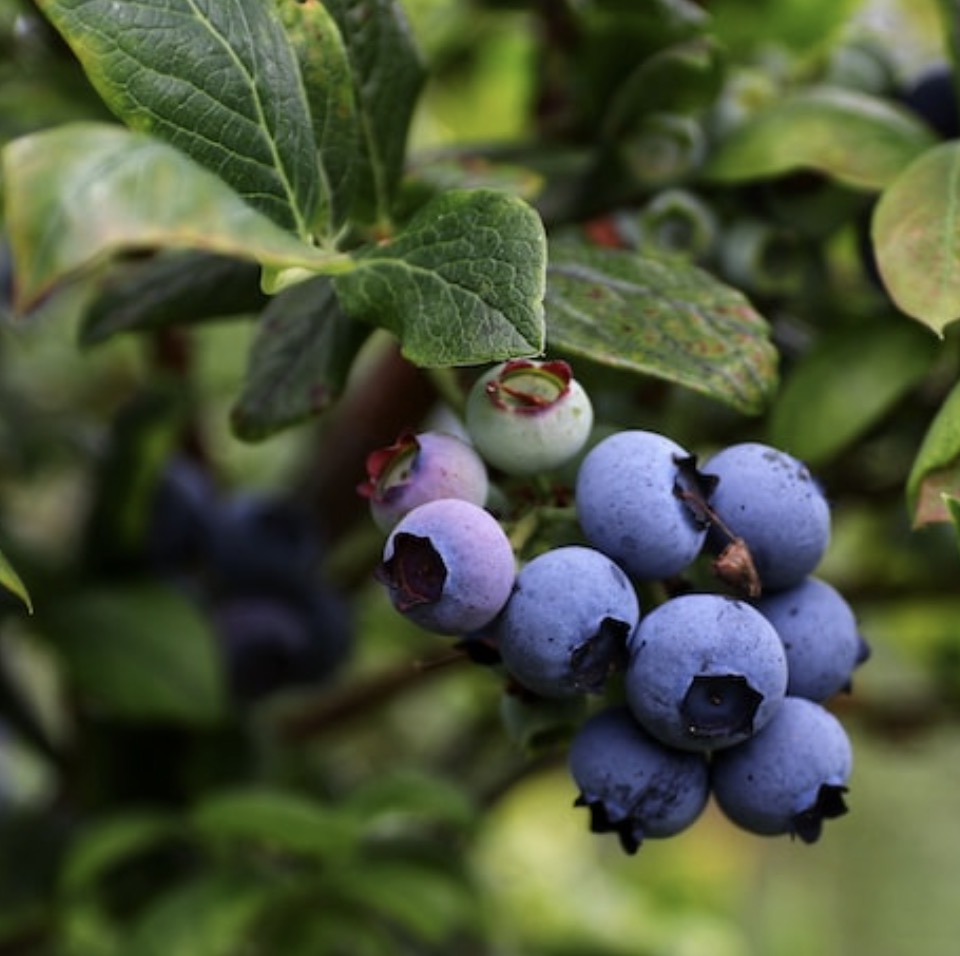Remembering Elizabeth Coleman White: Blueberry Queen
"When Elizabeth was a little girl, growing up on her dad's cranberry farm in the Pine Barrens of Burlington County, New Jersey, she would take walks and gather blueberries - wild blueberries.
There wasn't any other way to procure them."
November 11, 1954
On this day, a New Jersey agricultural specialist known as the Queen of Blueberries, Elizabeth Coleman White, died.
When Elizabeth was a little girl, growing up on her dad's cranberry farm in the Pine Barrens of Burlington County, New Jersey, she would take walks and gather blueberries - wild blueberries. There wasn't any other way to procure them.
Over time, Elizabeth began to wonder about creating a blueberry crop - something that would fit in nicely with the cranberry harvest, which happened at the end of the season. Cranberries grow in highly acidic soil, which is also perfect for growing blueberries.
Elizabeth began by having the local blueberry pickers keep their eyes out for the plants with the biggest berries, and then she would have them transplanted to her father's field.
She wrote:
I used to call them swamp huckleberries and thought an occasional one - half an inch in diameter - huge.
They always grew luxuriantly about the margins of our cranberry bogs, and as a girl I used to hunt the largest and best flavored berries and dream of a field full of bushes as good.
I knew it was a wild dream.
As fate would have it, in 1910, the chief botanist at the USDA, Frederick Colville, was also working on blueberries at his summer home in New Hampshire.
When Elizabeth read about his efforts, she reached out, and the two worked out a deal where Elizabeth would use her land and labor. Colville would supply his technical expertise, especially when it came to propagation.
Elizabeth and Frederick Colville crossbred the largest New Jersey blueberries with the largest New Hampshire blueberries, and the rest, as they say, is history.
It took Elizabeth five years to develop the first blueberry crop, but with steady effort, her blueberry dream became a reality.
Elizabeth's goals expanded with each successful effort.
She once remarked,
Enough of the puzzle has been fitted together to show that my old dream was but a faint shadowing of the possibilities.
Now I dream of cultivated blueberries shipped by the trainload, - blueberry specials - to every part of the country.
She continued:
The little berries of today's dreams are half an inch in diameter.
And the big ones?
Well, it is hard to measure a dream accurately, but they are at least an inch across.
And raising all these blueberries will give healthful remuneration and employment to lots of people.
But you can dream for yourself - [but] only if you are to share my confidence that this dream is not wild. Some day it will come true.
Elizabeth's first harvest yielded 21 bushels of berries that sold for $114.
By 1947, more than 8,000 bushels were harvested.
In 2016, 690 million pounds of cultivated wild blueberries were harvested in the United States, and annual revenue was s around $80 million.
Elizabeth's efforts also positively impacted land values. With the ability to make wasteland around pine districts productive, New Jersey land values rose dramatically - from 50 cents an acre to $500 an acre after cultivating the blueberry.
In addition to cultivating the first blueberry in 1916, Elizabeth was the first person to use cellophane to protect and market blueberries. The cellophane allowed Elizabeth's customers to see the quality of her blueberries through the packaging. Elizabeth's inspiration for see-through packaging was The Whitman Chocolate Company, which used cellophane to package their chocolates.
The Whitman Chocolate Company also partnered with Elizabeth; they helped her source the cellophane from France.
And there's one more footnote to the Elizabeth Coleman White story.
She was a champion of native plants - including the American Holly.
In 1947, Elizabeth helped found the Holly Society of America.
This post was featured onThe Daily Gardener podcast:
helping gardeners find their roots,
one story at a time
